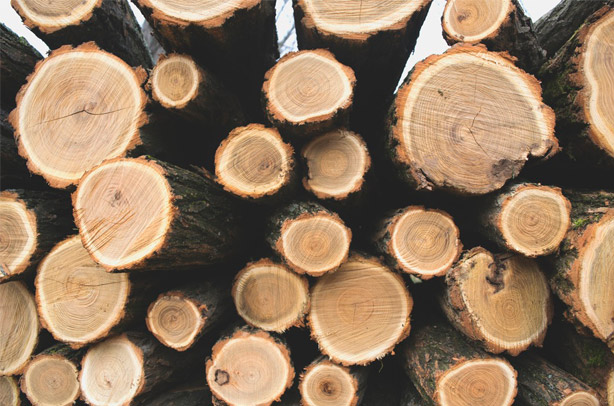Planting trees for firewood
Almost two third of the world population cooks and heats on wood and/or charcoal. In fact, wood is more important as an energy source than oil for the biggest part of humanity. This has a disastrous influence on forests as trees are not only illegally cut down for timber in order to sell to the industrialized world, for having more land to grow soya, cane or corn for bio fuel production, for being chipped and transported to the industrialized world in order to sell 'green energy', but especially for this purpose.
For millions, this is the only source of income and therefore any attempt to stop this, will fail. If these people do not have an income from cutting down trees and sell it as wood or charcoal to the people in the cities, they will starve from hunger.

As a result of this dependence forbidding selling this energy source is impossible. But not forbidding it also has devastating effects. In a country like Afghanistan there is only 1,3% of the country covered with forests while annually 30,000 hectares is cut down for this purpose. Within 30 years many countries will be out of wood to cook and heat. As oil prices increase this development of shortage of wood and charcoals may cause an unimaginable disaster. Tens of millions without income and hundreds of millions without energy. How can we solve this?
We should plant trees for firewood
With the present discussions about climate change this seems like cursing in a church. But it is not and I will explain this to you:
- Cutting trees to cook and heat, without replanting them is causing the rise of CO2 pollution in the atmosphere. This is bad and we must stop it.
- Planting trees, cut them once they are big enough and use them as wood or charcoal for cooking and heating has a zero influence on the CO2 concentration in the atmosphere. It is a cradle to cradle solution. It is logic: a certain species of a tree of ‘Y’ weight has ‘1X’ C atoms in the wood. While burning them they bind with O2 and form CO2. This raises the CO2 concentration with ‘1X’ C atoms in the CO2 molecules. After cutting down the tree we plant the same species and let it grow to ‘Y’ weight. In order to grow this weight, it has to take of the air ‘1X’ C atoms through unbinding CO2 molecules. Now the CO2 concentration reduces with the same quantity as it raised through burning: ‘1X’ C atoms out of the CO2 molecules. Some organizations claim that burning wood causes 50% more CO2 pollution than the trees unbind while growing. This is nonsense as there cannot be produced more C atoms from the tree while burning it then it has stored while unbinding the CO2.
Conclusion: planting trees for energy production is a cradle to cradle solution
The conclusion is that using wood and/or charcoal from planted trees is a cradle to cradle solution that does not harm the atmosphere. We should therefore develop an industry to plant trees for cooking and heating. It will give tens of millions a job, hundreds of millions energy and it will take away the need of illegal cutting of the last forests on Earth.
Suitable fast growing trees
The following list is a list of fast growing trees (Source document ‘Wood Energy’ FAO – Unisylva - editor T.M. PASCA):
| For the humid tropics | For the tropical highlands | For the arid and semi-arid regions | |
| Acacia auriculiformis Calliandra calothyrsus Casuarina equisetifolia Derris indica Gliricidia sepium Gmelina arborea Guazuma ulmifolia Leucaena leucocephala Mangroves Mimosa scabrella Munringia calabura Sesbania bispinosa S. grandiflora Syzygium cumini Terminalia catappa Trema |
Acacia mearnsil Ailanthus altissima A/nus acuminata A. nepalensis A. rubra Eucalyptus globulus L. grandis Grevillea robusta Inga vera |
Acacia brachystacya A. cauzbagei A. cyclops A. nilotica A. saligna A. senegal A. seyal A. tortilis Adhatoda vasica Albizia lebbek Anogeissus latifolia Azadirachta indica Cajanus cajan Cassia siamea Colophospermum mopane Emblica officinalis |
Eucalyptus camadulensis E. citriodora E gomphocephala E. microtheca E. occidentalis Haloxylon aphyllum Il. Persicum Parkinsonia aculeata Pinus halepensis Pithecellobium dulce Prosopis alba P. chilensis P. cineraria P. juliflora P. pallida P. tamarugo Tamarix aphylla Zizyphus mauritania Z. spina-christi |
Downloads and links
Read more about how useful firewood is as an energy source for the poor.















